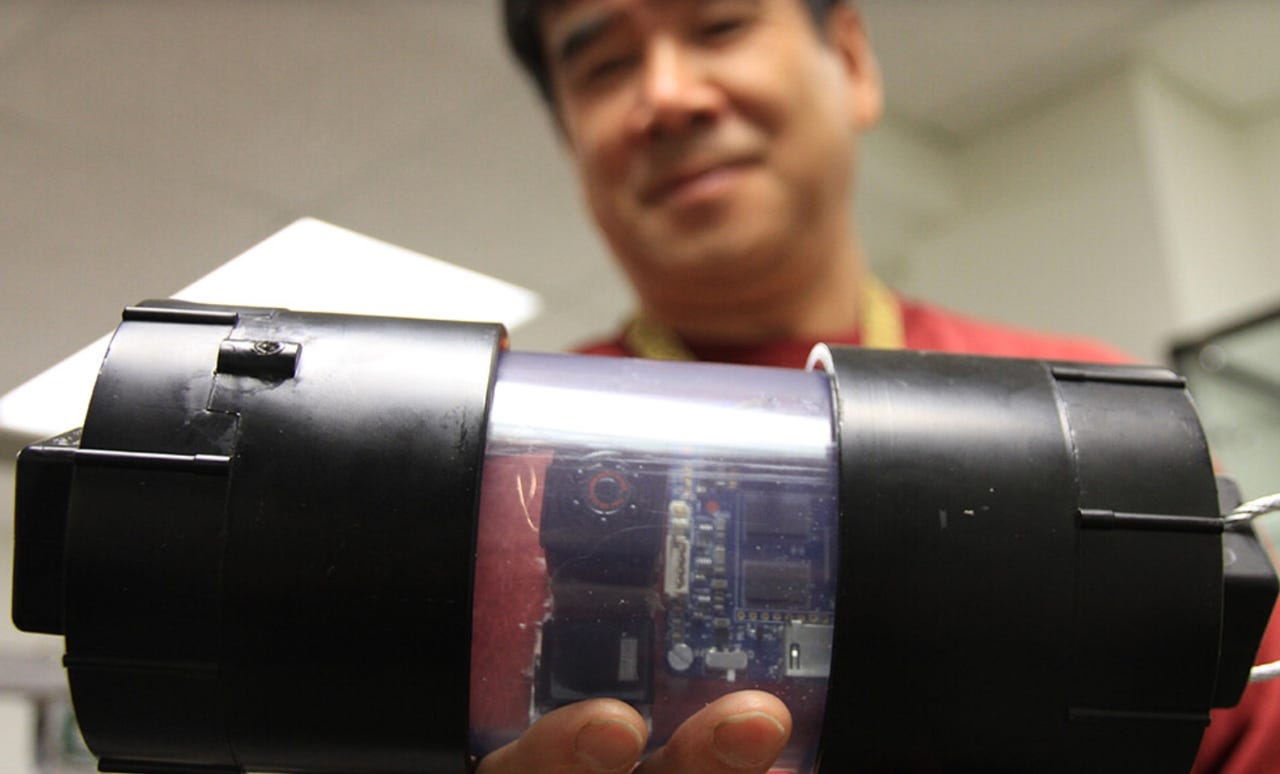Robot fish detects leaks in LA underground pipes


Researchers are developing a robotic fish that can dive through underground pipes to detect leaks and breaks which can result in water shortages.
This month, a team from USC's Information Sciences Institute (ISI) revealed a new research project dedicated to solving the problems posed by the US' aging water system.
Featured
In Los Angeles alone, roughly two-thirds of the area's 7,000 miles of water pipes are over 60 years old, going beyond their useful lifespan.
As these pipes get older, they are more likely to leak and crack, potentially resulting in water shortages, disruption, and costly repair bills.
As these systems deteriorate, city planners and officials need a way to detect the most critical spots in which pipes need to be replaced -- and robots may end up taking on this task.
The ISI team's PipeFish robot, created by Wei-Min Shen, director of ISI's Polymorphic Robotics Lab and research associate professor of computer science in USC's Viterbi School of Engineering, is an autonomous invention which is able to quickly detect damage in pipes, whether or not they are meters below ground level.
The PipeFish is sent through pipes by way of existing fire hydrants. As the robot swims along, it captures real-time video of the state of the water system, and sensors provide additional information on pipe quality and the robot's position as it travels.
The robot will move together with water flows, while an onboard computer will control lights, sensors, and a 360-degree camera. Other sensors can also be utilized to collect information on flow rate, gas space, and detect illegally dumped chemicals.
Once the robot is retrieved, the data collected can be analyzed to check for the early warning signs of pipe defects.
"This could be a game changer," says Shen. "Instead of excavating and replacing every pipe, which is a huge expense, PipeFish can narrow in on specific problems to enable repair before serious damage occurs."
Shen and the university have been working with the Los Angeles Department of Water and Power (LADWP) to test and refine the robot for the past year.
Shen's team is currently experimenting with "dry tests" in pipes at the LADWP's Sylmar West Facility but plan to add water early next year to try out PipeFish in different pipe systems and environments.
The ultimate dream is to send a school of PipeFish through LA pipes and beyond, programming them to travel down specific paths to cover a vast amount of ground in one go, detecting problems along the way.
"The plan is to eventually send PipeFish through every major water pipe in LA to identify risk, and help officials prioritize which pipes need to be repaired or replaced first," says Shen. "Every city in the world needs a PipeFish."